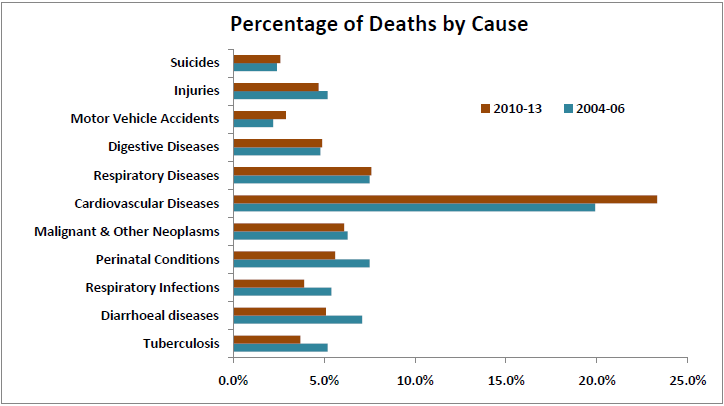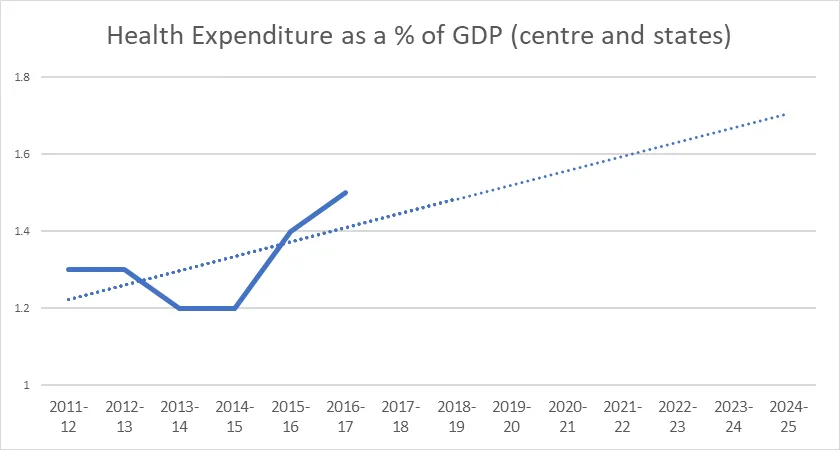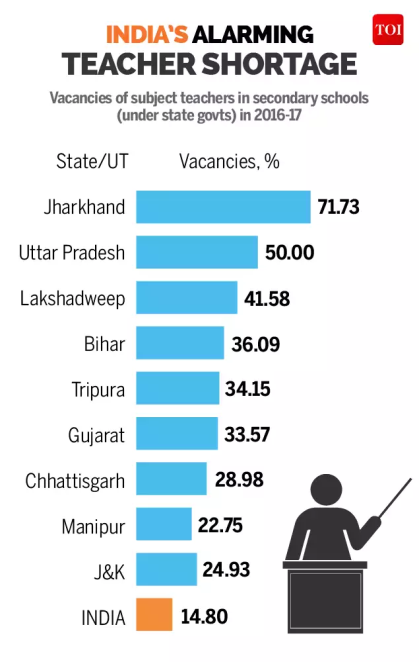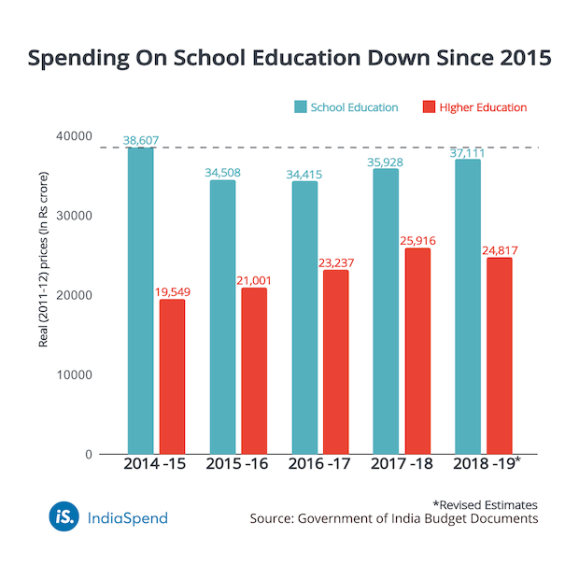Introduction
India is on the top list of the most populous countries in the world that has recently been gaining recognition as a major regional power. At the moment, there are many grave problems that plague India, and if unaddressed, they may set the Southeast Asian country for a looming crisis. For instance, the country has yet to transform its system of education and make it up to global standards. Aside from that, it is essential to ensure equal access to education for all Indians to ensure that more qualified cadres enter the labor force. Health care is also poorly developed, and due to the shortages in health workers and a big population, many Indians struggle to receive professional help. Lastly, the country suffers from an underwhelming infrastructure and lacks proper urbanization. This paper aims to identify potential policies in infrastructure and education and develop new options to deal with poverty and inequality in India.
Poverty and Inequality
Poverty and inequality are the two critical problems for Indian citizens. There are many past and present factors that determine the quality of services offered to people. However, instead of learning the causes of evident problems, it is expected to develop new policy options to deal with poverty and inequality. One of the decisions that can be made at the moment is to analyze several important sectors and clarify what can be done to change the current situation.
Despite the intentions to predict health-related, educational, and financial complications and problems, India continues suffering from poverty and inequality. According to the recent findings, about 2/3 of Indian people lives in poverty, with about $2 per day. There are also cases when people do not have access to the expected minimum of $2 and cross the line of extreme poverty, making children and women the weakest members of society. In addition to its negative impact on the quality of life, poverty remains the cause of inequality and unfair treatment to citizens. Researchers identify India as one of the unequal countries around the globe, with 1% of rich people controlling 53% of the country’s wealth. Still, there is a chance for the country to deal with poverty and inequality if certain policies are taken into consideration, and the most expected areas of improvement include health care and education.
Health Care
One of the greatest barriers to providing equal access to healthcare in the country is its growing population with ever-increasing needs. The growth of population, the development of international relationships, and uncontrolled access to services cause unequal opportunities and concerns. One of the markers of why India is a developing country in terms of healthcare is its leading causes of death. It is an established fact that in developed countries, people are more likely to die from age-related and non-preventable diseases (e.g., heart failure and cancer). In developing countries, a significant share of people’s common diseases includes communicable and preventable diseases. As seen in Figure 1, around 8% of Indians between the ages of 25 and 69 die from diarrheal diseases. Around 6% of deaths are attributed to respiratory infections that are perfectly preventable conditions in other, more developed countries. As of now, it is possible to outline the following three issues that need to be resolved through thoughtful policies, which are also discussed below.

Inequality in Access to Health Care
India is a country where the discrepancy between the rich and the poor has yet to be bridged by fostering a healthy middle class. In India, there are only two types of hospitals – those with world-class care and opportunities and underfunded, overcrowded facilities with looming staff shortages. Even though health care is supposedly free, waiting for a consultation or treatment is not an option for many Indians. Therefore, Indians who cannot allow paying additional money to avoid waiting lines quit the necessity to visit doctors, and those who have money fund their treatment plans independently.
The only possible solution to tackle the inequality issue would be to create comprehensive public health care for all. The benefits of this solution are obvious, including public health care improvements and the control of the quality of life. They will no longer have to drain their family budgets by paying out-of-pocket. At the same time, they will not postpone treatment until the point where serious consequences are identified. Evidently, providing universal public access to health services is easier said than done. The challenge of this policy option is time and unexpected efforts. The number of aspects of social and political life that need to be changed is great, and the development of a new stable healthcare system is hardly reachable to modern India.
Health Worker Shortages
Another problem in the healthcare sector that contributes to poverty and inequality is staff shortage. As the team of researchers from Economic Times reports, in 2018, India faced a shortage as significant as 600,000 doctors and two million nurses. The situation turns out to be more complicated because the scope of Indian problems is extremely high. It is hard to find well-trained people globally who are able to handle the burden of disease in the country. A tangible share of death can be attributed to preventable diseases, including those that may be effectively treated with antibiotics. However, many doctors and nurses are unable to administer antibiotics properly, endangering patients’ lives. This drives patients to pay for services of poor quality and dubious efficiency and buy high-price antibiotics from non-certified vendors. Both the shortage of health workers and the lack of medicine available for broader populations are a setup for a health catastrophe.
Another issue to tackle with policies is health workers’ shortage in rural areas. The rate of urbanization in India is nowhere enough to handle the population growth rate. Many people still reside in remote villages that for the lack of well-developed infrastructure are practically cut off from the rest of the world. Sharma notes that in the past decade, the number of health facilities has risen, but without well-trained staff, they are of no use. In 2015, 8% of 25,300 primary health centers in the country did not have a single doctor. In addition, 38% of the centers lacked a laboratory technician, 83% – surgeons, 76% – obstetricians and gynecologists, and 82% – pediatricians. All these problems were recognized several years ago, and not many regions experience at least some improvements in these areas.
Taking into consideration the problem statement, it seems that the government will need to address the burden from a few different angles. First, medical education appears to be insufficient for serving public health goals. As Sharma states, doctors are mainly prepared to work in specialized hospitals and tertiary care. To bring about a big change, education programs will need to be expanded to all kinds of medical knowledge. Second, working in the public sector should no longer be a humiliating, daunting experience for a doctor. Many excellent health cadres migrate to private clinics without even considering working at a public facility. It is hard to blame them: the public sector is known for its low salaries, overwhelming workload, and the lack of job prospects. Therefore, to transform the healthcare system, the government will need to change the work conditions and raise doctors’ salaries.
While taking the aforementioned measures, the government may face certain adversity. The system of education may show rigidity and resistance to change. Furthermore, it is likely that many aspiring students will be reluctant to choose a medical subfield that is not seen as prestigious. In this case, the government might need to encourage them by subsidizing their studies or offering scholarships. The same goes for working in the public sector, so the government will have to promote working conditions that are more attractive than they currently are. These changes may include social benefits, better work-life balance, and other rewards that doctors might find worth considering.
Improper Budgeting

It appears that the Indian government struggles with the healthcare budget. In a country with a growing population, from 2000 through 2015, the total national healthcare expenditure consistently totaled to 4% of GDP each year. It is mentioned in Figure 2 that out of these 4%, government expenditures amounted to only 1% of GDP. In comparison, the total healthcare expenditures in the US had grown from 13.3 to 17.8% of GDP over the same time period. Improper budgeting is a reason behind the ubiquitous out-of-pocket payments. A possible solution would be planning the budget so that the health expenditures were adequate, given the population’s current needs. Investing in health care would actually solve many problems by promoting better study programs, medical facilities, training health workers, and improving access to health services. Still, transforming the budget is a challenging task because the government would have to reprioritize the rest sectors. Another possible adverse outcome of accepting such a policy is burdening the population with more taxes to be able to spend more on healthcare.
Education
Transforming the education system in India would lead to better outcomes in health care. It is argued, however, that the healthcare sector is not the only one that is in dire need of change in terms of training. The entire education system of India is rigged to benefit those who can afford it. As of now, the objective metrics reflect the real situation. For instance, as opposed to developed countries, with literacy rates approaching the highest results, the situation in India with its literacy rate barely reaches the middle level. Besides, the dropout rate at the primary and secondary level is quite concerning.
However, fixing the Indian education system is nothing insurmountable, and the following solutions might be offered:
Training teachers
As seen in Figure 3, India is experiencing teacher shortages, which puts a strain mainly on poorer states. It is argued that more comprehensive training and competitive salaries could attract more people to the field. As much as this solution seems straightforward, it has its drawbacks. First and foremost, the government should have a clear plan on how to motivate cadres to stay or move to rural areas that are lacking teachers the most. As in the case with doctors, an appropriate turn would be to offer benefit packages;

Redistributing the budget
As seen in Figure 4, educational expenditures have been on the decline since 2015. It is essential that the government plans the budget to account for the population’s growing needs. However, transforming the budget would is characterized by certain difficulties as the government would have to neglect the needs of other sectors that come at the moment of improvement. Another possible challenge of the policy is burdening the population with more taxes to be able to find additional resources for health care.

Infrastructure
Many issues with education and medicine in India stem from the lack of proper infrastructure. Indians struggle to access schools and medical facilities due to the poor connectivity between locations. Unfortunately, today, India lags behind many other emerging economies when it comes to infrastructure. Certain improvements are likely to affect many other sectors in the country. For example, it will help the country to overcome the power shortage and drive the nation’s industrializations. As economic slowdowns have hit many industries, and improved infrastructure could give a chance to India and its citizens. Below, there are some solutions to cover the common needs of the citizens in the country:
- Better regulatory mechanisms. India has a serious issue with low-efficiency infrastructure projects that drain the country’s budget while not really paying off in the long run. Despite many shortcomings and underwhelming results, India keeps investing in those projects, therefore, depriving other industries and institutes of funding. It is argued that better regulatory mechanisms that would control the realization of projects would keep everything in check to avoid waste and embezzlement.
- Fixing the imperfect industrial chain. It should be noted that many problems with infrastructure stem from the country’s quite modest industrial chain. Automation is still a foreign concept to many factories, which makes it difficult to make any progress in building modern infrastructure. One of the ways of fixing the imperfect industrial chain would be through education, e.g., comprehensive on-site training. This would allow companies to unlock their employees’ potential and reach their goals.
Conclusion
Despite the promising prospects that economic and social changes hint at, India is far from unlocking its full potential. It appears that health care of the country mainly suffers from improper budgeting, which results in understaffed medical facilities, low wages for health workers, and the absence of universal healthcare. In addition, the healthcare system needs to be free of inequality, so the government has to bridge the gap between the rich and the poor. The education system is challenged by similar problems, including understaffing and underfunding. As in the case with health workers, the government might find it feasible to consider introducing comprehensive training programs with social benefits and redistributing the budget to account for educational needs. Lastly, a significant change needs to be done in the country’s infrastructure. Many Indian social institutions lack connectivity and communication due to poor infrastructure. An adequate policy would target low-efficiency projects and introduce better regulatory mechanisms. Aside from that, better land acquisition, policies, and solutions for the imperfect industrial chain would help transform the Indian infrastructure and improve the quality of living in total.
Bibliography
Agrawal, Nisha. “Inequality in India: What’s the Real Story?” World Economic Forum, 2016. Web.
Dubbudu, Rakesh. “Cardiovascular Diseases Account for Close to a Quarter of the Deaths in India Between 2010 & 2013.” Factly. Web.
“India Facing Shortage of 600,000 Doctors, 2 Million Nurses: Study.” The Economic Times, 2019. Web.
IndiaSpend. “Can India’s Education Budget Fund Increased Spending in New Policy?” Business Standard, 2019. Web.
Marchildon, Jackie. “India Is About to Make a Massive Change to Its Health Care System.” Global Citizen, 2019. Web.
“Poverty in India: Facts and Figures on the Daily Struggle for Survival.” SOS Children’s Villages. 2019. Web.
Sharma, Dinesh C. “India still struggles with rural doctor shortages.” The Lancet 386, no. 10011 (2015): 2381-82.
Sinha, Dipa. “Budget 2018: India’s Healthcare System Needs More Money and an Urgent Overhaul.” The Wire, 2018.Web.
“States with the Worst Shortage of Teachers in India.” The Times of India, 2018. Web.